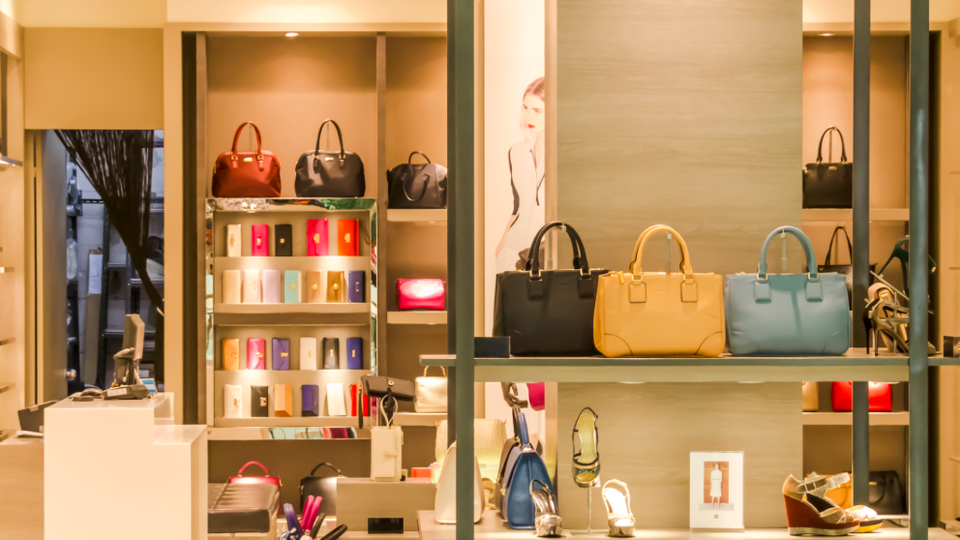As the global luxury market turns its focus to China in hopes of revitalising consumption, how relevant is the Tmall opportunity for brands?

As the global luxury market turns its focus to China in hopes of revitalising consumption, how relevant is the Tmall opportunity for brands?
Luxury is one of the categories that has been late to embrace the digital world, globally. The very accessibility and democratisation that digital activity offers conflicts with the exclusivity and aspirational dreams that luxury brands stand on.
But these are new and different times for everyone. In seeking solutions to alleviate the pressure that COVID-19 has put on US businesses, last month Anna Wintour announced that Vogue and the Council of Fashion Designers of America (CFDA) is partnering with Amazon to support American designers by launching the Common Threads storefront on Amazon Fashion that will feature emerging small and medium size fashion brands. This might be a significant move for the US market but in China, heritage luxury brands have been embracing digital for years, and in ways we still haven’t seen elsewhere.
Burberry opened its flagship store on Tmall back in April 2014 – that was six years ago. Following a year of development, Tmall’s partnership with Net-a-Porter culminated in the launch of its flagship store in the fourth quarter or 2019, opening the doors for over 130 luxury fashion brands to officially sell to Chinese consumers. And since the start of 2020, we’ve seen standalone Tmall flagship stores opening for luxury watch and jewellery brands Cartier and Montblanc from Richemont; global fashion houses Prada and Miu Miu, and contemporary fashion brands Alexander Wang and Balenciaga. Last year, Chanel Beauty and Christian Louboutin joined Tmall’s Luxury Pavilion, and following 2019 Tmall Global launches from Charlotte Tilbury, Fenty Beauty, and Drunk Elephant, Huda Beauty joined earlier this year. Retailer Sephora just announced its cross-border storefront on Tmall Global which will start off with 25 foreign brands. These brands recognise the China market and Chinese consumer as an important long-term investment, and standing still is not an option, even in the face of a global crisis. Perhaps especially in the face of a global crisis.
Unsurprisingly, the luxury push onto Tmall has gained more and more traction among brands, catalysed by the pandemic. In April, DLG organised a webinar on Digital Assets Brands Should Leverage Now as part of its series on China’s Digital Market. Polls were conducted over the course of the session, and one particular response stood out:
“Do you think that brands that previously rejected the idea of retailing on Tmall should reconsider now based on the current situation?”, we asked.
90% responded, “Yes”.
Tmall’s reach and traffic is undeniable – Alibaba reported 726 million annual active users by the end of March 2020, with over 800 million monthly active users across its platforms during the peak of the crisis. As Alibaba shared during their 2020 first quarter earnings call, 70 per cent of the growth in new active users on the platform over the past year have been from lower tier cities in China. For new entrants and established brands, this direction of growth represents a significant opportunity for brands even if it only represents a slice of the market. At the same time, with increasing competition, brands now need to have a stronger grasp of the nuances across consumer preferences and behaviours across the country. The platform’s algorithm personalises storefronts based on the consumer’s past and predicted behaviour, while brands can utilise Tmall’s rich data resources to augment their merchandising and pricing strategies, as well as product offerings, to target relevant consumers in the online and offline markets.
Still, some have hesitated – and it seems to stem from two common concerns we hear from brands:
Can Tmall be the right setting for luxury and premium brands and consumers? How can brands succeed if they don’t participate in promotions and discounts, which the platform is well-known for?
While it may be early days for luxury and premium brands on Amazon, the Tmall opportunity is already in place. Tmall has developed a walled garden with Luxury Pavilion; Tmall Club invitation offers for VIP customers; and most recently Luxury Soho for luxury deals and off-season collections to reach newer generations of luxury consumers. In addition to that, Tmall’s ecosystem is an integrated marketplace that includes marketing platforms, activities, and tools; data tracking, insights, and sources; logistics, customer service, and loyalty, to support brand stores on their marketplace. The rollout of Tmall 2.0 – an upgraded storefront that gives brands greater control over the look and feel of their store, and more interactive elements – is a welcome new addition that has been embraced by brands like Michael Kors and Cartier as well.
As a marketplace for everyone, it is also important to realise that as a brand, you’re not alone in discovering the opportunity. With millions of sellers and brands on the platform, consumers need to know to look for your brand or have a way to discover it. For luxury and premium brands, it is especially important that consumers do so on the big sales day. Effectively Shaping the public perception of your brand is crucial in building equity in a market, and this is something that can be supported by Tmall, as well as other digital initiatives. The success of a brand in the market and its Tmall store relies on the brand’s ability to understand the complete picture of the consumer journey inside and outside of Tmall.
Inside Tmall, brands have leveraged the various tools and resources:
– Livestreaming to share brand and product stories, engage with consumers and gain instant consumer feedback, and directly drive sales;
– Hey Box to test and launch new products online and offline, domestically and abroad;
– Tmall Innovation Center for market and consumer driven product innovation and development; and
– Super Brand Day for a brand-focused, sales-driven event supported by the various Tmall ecosystem resources
Outside of Tmall, brands need to also be thinking about:
– Social media environments like WeChat, Weibo, Douyin, Little Red Book, and Bilibili to build brand equity;
– Information sources like Zhihu, media and aggregators, Key Opinion Leaders (KOLs), Key Opinion Consumers (KOCs), and celebrities to drive brand desire and product interest and consideration;
– Offline events, pop-ups and stores to complement online consumer experiences with building emotional consumer connections; and
– Added-value Social CRM, clienteling, customer benefits and privileges to develop brand loyalty
The opportunity on Tmall is significant, and for those who are considering it – now is the time to make the move. And it starts first with assessing the market opportunity for your brand. Tmall may not be for every brand right away, but it doesn’t mean that it won’t be. With grey market and third-party sellers, many brands are “in” the market already, so it is important to assess the current state of your brand in the market first.
As we’ve seen, businesses that have been complacent are really feeling it now. Brands that are not making their move are going to find it harder to kick things into gear later – it’s a real pressure test for survival right now. And in China, brands with with real and strategic plans – not stop-gap measures – are the ones who will find themselves emerging on the other side, still in the race when the dust finally settles.
To find out more about the Tmall opportunity, save a seat at the upcoming DLG Webinar Series #3: Leveraging Beauty E-commerce on Tmall Global on 14 July with Iris Chan, Partner & International Client Development Director at DLG and Demi Shi-Guth, Category Expert of Beauty and Personal Care (The Americas) for Tmall Global and Kaola.com
Cover image: Alizila










